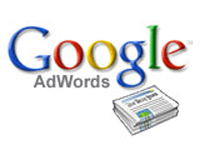Google goes offline planning to sell Print Ads for newspapers
Google Inc. said on Tuesday it is expanding its Print Ads program to allow online advertisers nationwide to place print advertisements in 225 newspapers, serving half of U.S. newspaper readers.

The program, which will let hundreds of thousands of Google AdWords customers place newspaper ads in the same way they buy Web page, radio or TV ad space, follows a 50-publication test started last November among a small group of advertisers.
The 225 newspapers are located in 32 of the 35 biggest U.S. metropolitan markets, with a combined circulation of almost 30 million subscribers. Among the newspapers in the program are The New York Times, Washington Post, Chicago Tribune, Atlanta Journal-Constitution, Seattle Times and San Jose Mercury News.
Google Print Ads lets advertising agencies and advertising customers of all sizes plan and buy traditional newspaper media -- from one-inch to full-page displays in both national and local newspapers via Google's existing ad sales software.
Smita Hashim, group product manager for Print Ads, said it was designed to bring online advertisers back to papers. "We are not actively marketing to newspaper loyalists," she said, referring to print advertisers to which papers typically sell, Reuters reports.
Advertisers participating in the program can search for newspapers through a number of criteria, including their circulation and geographic region. Advertisers can make an offer for a certain size advertisement — ad rates are listed, but publications often, in industry parlance, go “off the rate card.” The advertiser can then wait to see whether the ad is approved or the publication responds with a counteroffer.
When advertisers ultimately place ads (by uploading a PDF to the site), Google bills the advertiser through its existing system, saving all parties paperwork.
“We did indeed get access to a certain number of new advertisers, and we’re pleased by that,” said Owen Youngman, senior vice president for strategy and development at The Chicago Tribune, a publication that participated in the pilot program and is continuing its involvement. (Google reports that 98 percent of its pilot papers are still on board.)
Mr. Youngman said there were still some kinks to be worked out of the system, including an eBay mentality of online advertisers to make extremely low initial offers. “Many advertisers not used to advertising in newspapers place bids for space that are far below the price that we’re willing to accept,” Mr. Youngman said. “It can be frustrating for everybody.”
Newspapers try to anticipate the number of ads they will sell in determining the number of pages each day. But they often end up filling some space with what are known as “house ads,”
advertisements for newspaper features. Mr. Youngman said the Google program allowed dropping in advertisers at the last minute.
“We’re pleased that on occasion we’ve been able to fill space that would have gone to in-house promotional ads with paying advertisers,” he said.
Mr. Spinnell of Google said that newspapers’ acceptance rate of advertisements has been “north of 50 percent,” but would not be specific. Neither would he specify the exact commission that Google is pocketing on the newspaper sales, except to say that “the majority of the revenue will stay with the paper.”
The newspaper program has been the first leap offline for some advertisers, Mr. Spinnell said. “A lot of these marketers have grown up on the Internet — they’ve built their businesses here,” he said. “And this is an opportunity for them to get additional exposure.”
With more than 50 percent of newspaper readers also online, some companies are hoping to steer people from dead trees to pixels, the New York Times reports.
Source: agencies
Prepared by Alexander Timoshik
Pravda.ru
Subscribe to Pravda.Ru Telegram channel, Facebook, RSS!


